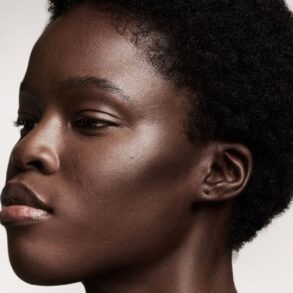As part of Justin Fermenich’s bachelor party, his friends took him to a Go-Kart track — only he didn’t fit in the karts.
Instead, Fermenich, a Waukesha resident who is 360 pounds, spent his bachelor party watching his friends drive around the track for 45 minutes, while he sat alone at a table.
“That’s embarrassing, there’s no way around it,” Fermenich said.
His experience is not unique. An estimated 34 million Americans faced weight discrimination in 2019 alone, according to Dove’s “Real Cost of Beauty Ideals Report.”
This discrimination can look like verbal stigma, denied access to medical treatment, financial inequality and struggles to use local resources like public buses or clothing stores.
When consumers of varied body types walk into shops, restaurants and entertainment venues across Wisconsin, many will face barriers fitting into the space, the seats or the products themselves.
Whether or not business owners mean to exclude people, this contributes to a larger problem of size stigma that affects how Wisconsin’s people navigate their communities.
USA TODAY NETWORK-Wisconsin surveyed readers and talked to consumers and business owners about their experiences and struggles in addressing size inclusivity. Local and national experts also shared insights about the issue and what can be done to address it.

Editor’s note: As descriptions of bodies are not typical in reporting, USA TODAY NETWORK-Wisconsin chose to describe the interview subjects in this story as having an “average body size,” “larger body” or “smaller body” when descriptions are needed, unless asked to use another descriptor by an interview subject, or if a more specific descriptor was provided. The use of words like “obese” and “overweight” are used only when providing statistical data which already uses this language.
‘Missfitting’ in Wisconsin businesses compromises comfort, accessibility
The Go-Kart track was not the first nor last time Fermenich was unable to fit into a seat. He has had trouble finding seats at restaurants, especially if the space is mostly booth seating, at event spaces and even when he goes to his job.
Fermenich mostly works from home in the IT field, but when he goes into the office, the chairs are not designed to hold his weight.
“I’m raising the chair back up every 20 minutes or so because it just sinks down the hydraulics on it and the arms are not very wide,” he said. “It definitely makes a difference in my day-to-day comfort in the office.”
A 2017 study published in Medical Anthropology Quarterly surveyed 296 people prior to and up to 24 months following bariatric surgery. The study explored the ways people in larger bodies experience “stigmatizing cues” or “missfitting,” which is defined as “the need to plan and scan constantly while navigating too-small public spaces.”
The study called the “failure to fit into a physical space” because of body size a “theme” because of how many participants described narrow seating, crowded spaces and tightly spaced restaurants. Participants with a BMI above 30 (when a person is considered medically “obese”) who had not yet received bariatric surgery reported “not being able to fit comfortably into seats on airplanes or in public spaces” at a frequency of 77% and “not being able to find clothes that fit” at a frequency of 84%.
In the USA TODAY NETWORK-Wisconsin survey, which received about 50 responses from consumers and one business owner, respondents also referenced small spaces, including seating, and an inability to find clothing that fits.
A little more than 56% self-identified as larger than what society deems as an average body size.
However, 58% of respondents felt local businesses — including shops, restaurants and offices — were not designed to fit them, citing booths that don’t move, high-top tables and chairs being too high, small restroom stalls and too-narrow aisles.
Additionally, respondents noted a lack of high-quality plus-size clothing and age-appropriate petite clothing, especially in Wisconsin’s smaller communities. Almost 84% said shopping was easier or more accessible at major retailers rather than small businesses.

Some survey respondents suggested a wider variety of seating and clothing options. Others would like to see consideration given to height.
“Everything seems to be geared more for the petite-sized person,” one person, who did not disclose where in Wisconsin they’re from, wrote. “Most clothing stores do not carry clothing long enough for a tall person. If you are a tall person with extra weight, you might as well forget about shopping locally.”
Fermenich said availability of clothing sizes can have a lasting impact. He recalled a time when everybody in the office received matching light-blue T-shirts to celebrate completing a project. However, the matching shirt didn’t come in his size, a 4X, and he instead received a significantly darker blue shirt.
“Everybody was in these light blue colors except for the fat guy in the photo we took,” he said. “They just didn’t consider how that would affect the person wearing the shirt that was a different color than everybody else.”
Weight stigmatization adds to the problem and has impacts regardless of body size
One person answered the USA TODAY NETWORK-Wisconsin survey as a business owner, identifying their business as a restaurant in the Fox Valley, and said they didn’t consider consumer sizes when opening the business.
“If a person is so big they can’t use normal accommodations, then they’re on their own, they can lose some weight,” the business owner wrote.
While this was the only business that responded to the survey, they were not the only person to respond with judgment.
“Everyone I see is wearing clothes and if you’re larger, obviously have no problem finding something to eat,” one person, who defined themselves as “taller than average,” wrote.
Size-based stigma affects more than just people in larger bodies.
According to the American Psychological Association, roughly 40% of U.S. adults reported weight stigma, which increases risk for mental health problems, suicide, disordered eating, health care avoidance and weight gain.

Losing weight isn’t as easy as it sounds. Christy Greenleaf is a kinesiology professor at the University of Wisconsin-Milwaukee and has done extensive research on disordered eating and the psychological and social aspects of weight. Greenleaf said bodies are “not closed systems” and eating less and exercising more to lose weight doesn’t always work.
“This kind of energy balance really doesn’t hold up scientifically, because our bodies are adaptive and so our physiology adapts to energy expenditure and caloric intake,” she said.
Greenleaf said when people try to lose weight, often their bodies will actively work to make it harder by increasing hunger and burning fewer calories with exercise.
“It is unrealistic to expect most people to lose significant amounts of weight and keep it off,” she said. “It has nothing to do with willpower or self-control or discipline or work ethic.”
Instead, she said, weight often has more to do with a person’s physiology, genetics and environment. She added shaming people in larger bodies often works counter productively. A common response to facing tough love at a doctor’s office is to stop going to the doctor. They are also less likely to go to the gym.
“Wouldn’t it be better if we had a world in which people could live happy lives in the bodies that they have and move through the world in a way where they are respected, treated humanely, and where they have opportunity for employment and education?” she asked. “And if they want to engage in physical activity, that there are spaces where they’re welcomed?”
Weight is not an accurate measure of a person’s health
Menasha resident Samantha Moore, 25, who describes herself as average to smaller than average, said she knows her privilege compared to people in larger bodies, but also felt negative opinions after gaining weight.
“In high school, I was like 117 pounds and now I’m hovering around 155, so I gained like 40 pounds, and it made my mother very concerned,” she said. “She was like ‘oh my gosh, you’re not healthy,’ which I’m not, but that’s a separate issue.”
Moore’s health concerns, which includes IBS, have been longstanding and are unrelated to her weight.
Greenleaf said the initative by The Association for Diversity and Health, Health at Every Size (HAES), is a way people can address health outside of body size. HAES is a holistic definition of health that says professionals should not assume a person is healthy solely based on weight, and patients deserve respect and access to healthcare regardless of size.
Fermenich said these stigmas are present in public interactions. He gained weight during the coronavirus pandemic, around 60 pounds, and noticed a change in how people respond to him.
“When I was smaller, people made eye contact with me on a regular basis,” he said. “While I was always fat, I’ve now reached a different level of fatness where people don’t even make eye contact with me anymore … It’s a far more lonely space.”
This takes a mental toll, and it’s become difficult to just exist. He said while he knows dieting often doesn’t work and can have negative health outcomes, he is tired of existing in a body that is not accepted and is often ostracized.
“Maybe if I lost 50 pounds on Ozempic (a weight-loss drug), it might just be easier to be,” he said. “Do I just do it because it might be easier to exist?”
Retailers struggle to stock plus-size options, leaving consumers discouraged

Choosing where to shop can also be a challenge for those with varied body types.
“When I go to Target I know they carry my size,” one person, who identified themselves as “larger than average” in the USA TODAY NETWORK-Wisconsin survey, wrote. “Local businesses need to showcase that they carry products for people my size. My default assumption is that they don’t, because 99% of the time that’s correct.”
Though Moore’s body shape could fit into straight sizes (small to extra-large), the clothing she often buys at Menasha area thrift stores is plus-sized or maternity wear. She has sensory concerns and extreme bloating that make her more comfortable in flowing clothing.
“Not knowing what size you are consistently is really frustrating,” she said. “I could go to a store and try on every pair of pants they have, which I’ve done, and none of them will work.”
Zoe Schuler of Madison also struggled to get a boutique shopping experience because stores didn’t stock above a size 12.
She opened Wisconsin’s first and only plus-size-focused boutique, Z Boutique, knowing there would be others who would want the experience.
“It’s so amazing to watch someone come into the store for the first time and realize that everything comes in their size,” she said.
Schuler and her team do careful research and reach out to manufacturers to find such clothing.

Marissa Knuth owns Ivory Rose Bridal Boutique and Pollen in Appleton. She said it has always been hard for her to find bridal wear in plus sizes and is now realizing the difficulty at her new casual clothing boutique that opened in July.
Pollen is divided into two sections, with straight-sized clothing making up the majority of the store and plus sizes (1X to 3X) confined to a small area.
“You can just feel the defeat in the plus-size customer when they come in, and that’s never what we want,” Knuth said.
She plans to expand sizing in her shop once she has found vendors that carry sizes extra small to 3X.
Sarah Eileen Smith, program director of UW-Stout’s fashion and retail program, said access to plus-size clothing has always been a problem for the fashion industry, and it’s only gotten marginally better in recent years.
She said the industry often prioritizes clothing sized between a small and extra large and, when companies focus on selling high-fashion items, the available sizes are even smaller and more limited. Garments in categories like formal wear, lingerie and athletic wear are often the hardest to find in larger sizes.
This is partly because manufacturing larger garments is more expensive in material costs and designers are often less familiar with body shapes of people in larger bodies, Smith said.
While the average U.S. women’s clothing is a size 16 or 18, according to a 2016 study, retailers generally focus on and sell more garments in sizes 8 to 12.

“It’s kind of a double-edged sword here,” Smith said. “Going into a retail store, there’s only so much space on the store floor and the sizes that sell most often are going to be prioritized.”
Smith and Knuth both said boutiques, even those with more size options, are often overlooked or seen as non-inclusive and judged before someone shops.
“There has been a stigma within boutique worlds for however long that the plus-size community cannot fit into boutique (clothing),” Knuth said. “Everyone I think is actively trying to fix that. But, also from a business owner perspective, at the end of the day, we have to do what sells.”
Retailers, businesses can prioritize comfort, promote body positivity
Schuler recommends small clothing stores carry the same things in plus-sizes as they do in straight sizes, and to advertise clearly what sizes they carry.
She also said to think about physical comfort — from the size of the fitting rooms to the distance between racks — to have someone on staff that can relate to plus-size customers, and to train staff to foster a body-positive attitude. This can include staff avoiding negative self-talk and topics of dieting, as well as learning to redirect a conversation if customers are talking badly about themselves.
“As a plus-size woman, it would be awful to be in a fitting room listening to a smaller woman bashing her body next to me,” she said.
Christine Anderson of Fond du Lac promotes body positivity through her photography studio Love Your Sparkle, inspired by the French boudoir — a woman’s private dressing room — which results in intimate portraits featuring subjects often wearing lingerie, gowns or anything else they feel beautiful and comfortable in.
“Women, unfortunately, are judged by society the harshest,” she said. “(Boudoir photography) is a way for women to take power over that and to say, ‘I am worthy, and I am beautiful, just where I am right now.'”
To achieve this, Anderson teams up with a makeup artist and hair stylist who start off the sessions giving clients a confidence boost. Anderson makes sure her subjects feel calm and comfortable so they leave with an experience that makes them feel good about themselves — with photos as proof.
“I get super excited when I take a picture like that and turn the camera around like ‘that’s you,'” she said.
After more than five years in business, Anderson noticed the people who are most insecure about their bodies are not plus-sized women.
“They’ve already been judged harshly by this world,” she said. “Women who are thin are the most particular about their bodies, the most wanting to cover up.”

Being a size-inclusive business has hurdles, but it’s not impossible
The Beyond Compliance Task Force with Downtown Madison Inc. is trying to help restaurants make Madison’s downtown more accessible. While the program is focused on people with disabilities, task force chair Jason Beloungy said these measures can also help spaces be more inclusive for people in larger bodies.
The task force is working on providing eateries with step-by-step information on how to be accessible.
Beloungy said a bigger issue is business owners often aim to only make the business as accessible as is legally required by the Americans with Disabilities Act, and then fail to even accomplish the minimum.
Business owners often worry about costs and may want to maximize seating to maximize profits, overlooking access to those seats.
“If you’re knowingly keeping people out of your business,,” Belougy said, “does that feel right?”

New apps also make it easier. Friendly Like Me allows consumers to review businesses for accessibility. Reviewers are asked if a business has accessible parking, if seats have arms or if booths are moveable, if staff is accommodating and friendly to people with disabilities or in larger bodies and reviewers are encouraged to share photos of seating.
Fermenich said restaurants and clothing boutiques making small accommodation changes can be extremely helpful, but even just explaining who can use the space can make a difference.
When he was unable to fit in the Go-Kart, he realized the business did not advertise a size limit.
If the business had made clear ahead of time how inclusive the space was, he would have been saved the embarrassment. Additionally, if the friends who had scheduled the activity had thought to call ahead, it might not have happened at all.
That’s why he thinks the more people who talk about the issue and are aware of it, the better.
“Having a (smaller) person say, ‘Hey you’re losing my business as well as my friends’ is far more impactful than having the (larger) person go, ‘Oh, I can’t come here,'” he said. “Because the stigma that’s attached to (larger) people is ‘it’s your own … fault anyways.’ So, we need those allies.”
Alexandria Bursiek Kloehn is a business reporter for the Appleton Post-Crescent. You can reach her at abursiekkloehn@gannett.com.
Daphne Lemke is the Streetwise reporter for the Fond du Lac Reporter. Contact her at dlemke@gannett.com.
This post was originally published on this site be sure to check out more of their content.





